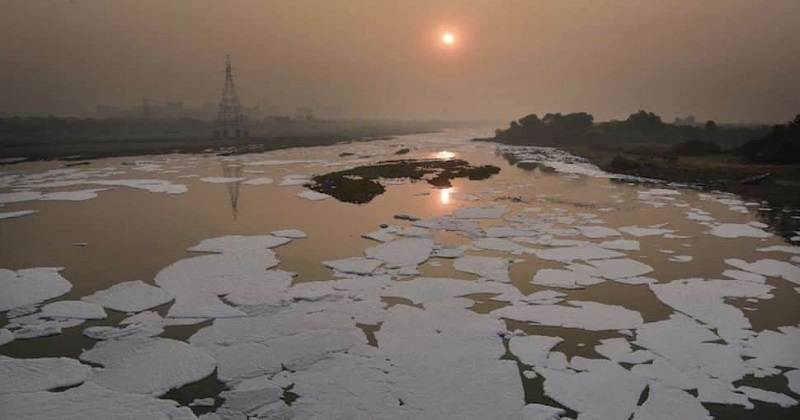
New Delhi: On Monday, the Delhi government forbade the sale, storage, transportation and marketing of soaps and detergents, which are not adhering to the latest Bureau of Indian Standards (BIS) parameters to curb pollution in the Yamuna river.
In January, the National Green Tribunal (NGT) had taken the recommendations of the Yamuna Monitoring Committee (YMC) which had recommended directing the Delhi government to issue orders, ‘prohibiting the sale, storage and transportation and marketing of detergents which do not conform to the revised BIS standards’. The NGT had also directed to launch awareness campaigns about the adverse effect of using substandard soaps and detergents.
According to an order issued by the Delhi Pollution Control Committee (DPCC) on Monday, all the authorities concerned, including local bodies, civil supplies department and district administrations having control over shops and other companies dealing with sale, storage, transportation and marketing facilities for soaps and detergents in Delhi should assure the compliance of directions through strict watchfulness and surprise checks. The pollution body has also asked the authorities concerned to submit monthly action reports of inspections carried and following action taken without fail.
According to the experts, the use of substandard soaps and detergents is one of the major reasons behind the pollution in the river. Several times, visuals of toxic foam floating on the surface of the river in Delhi also make their way to social media.
The prime reason behind the development of the toxic foam in the Yamuna is high phosphate content in the wastewater because of detergents used in dyeing industries, dhobi ghats and households, according to an official of the Central Pollution Control Board. ‘A large number of unbranded detergents are also used in households and dyeing industries. The wastewater containing high phosphate content reach the river through untapped drains,’ he said. These detergents and other organic matter get stored in the riverbed when the river is flowing normally, and when water falls from a height on reaching a barrage, it leads to disturbance and churning which causes the foam.
As per a DPCC report, against an emanation standard of 5 mg per liter for dissolved phosphates, their concentration in the Yamuna varies from 6.9 mg/l at Okhla to 13.42 mg/l at Khajoori Paltan (downstream of Najafgarh drain).
A comparison between the 2001 and 2002 BIS and those prescribed in 2020 shows that the Sodium Tripolyphosphates percentage for the household washing detergents bars has been decreased from 9.5 (percentage by mass) to 5 for detergent bars, 2.5 for powder, zero for household detergents for woolen and silk fabrics. In its report presented to the NGT, the YMC had also advised that all the manufacturers of soaps and detergents be directed to disclose the ingredients present in the product and display the same on the package.
‘This is a matter which will only be effective if the Ministry of Consumer Affairs, under which the BIS functions, is directed to bring out a policy and notify not just standards but a mandatory requirement to declare the ingredients along with their proportion,’ it had said.
Soap making is not limited only to Delhi and even if attempts are made by the Delhi government, it will not have the expected effect on soap and detergent production in other states. The committee had pointed out that since the effluent joins the drains and the rivers in Delhi. Problem will be continued.

Post Your Comments